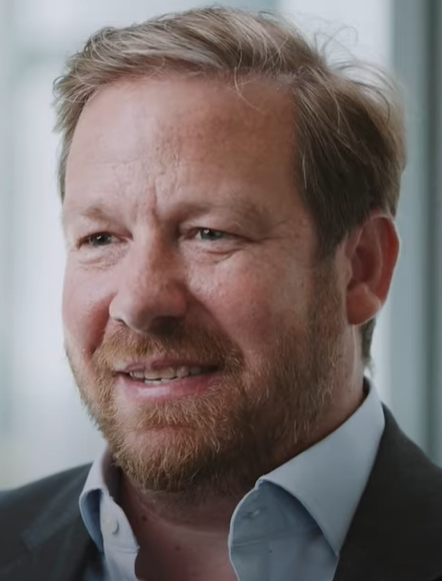What’s been top of mind for telcos in 2023?
Telecoms.com periodically invites expert third parties to share their views on the industry’s most pressing issues. In this piece Greg McCall, Chief Networks Officer at BT Group, looks back over the past year from and operator’s perspective.
December 15, 2023

2023 has been another significant year in our industry as telcos continue to make substantial progress during what is a period of major transformation. Whether pursuing vitally important sustainability goals, or ensuring networks continue to offer seamless connectivity experiences amidst ever-increasing usage, it’s clear that constant network evolution is required in order to keep ahead of customer behaviors and traffic trends, as well as wider operational requirements and ambitions.
As the end of the year approaches, now feels an appropriate time to reflect on four trends that were a big priority for telcos in 2023.
Managing customer experience in the era of mobile data usage spikes
Every year we see annual increases in demand for mobile network capacity of between 30-40% over EE’s network. Managing this growth in order to maintain performance is a continuous task, and how it’s done is dependent on a number of factors.
One such solution which has seen tremendous growth over the last 12 months or so is the small cell – essentially a mini-mast which can be deployed on existing street furniture such as phone boxes or BT Street Hubs to boost capacity in densely populated areas. From an EE perspective, we’ve deployed over 500 new small cells across the UK since last year, reducing network congestion and ensuring customers can take advantage of download speeds of up to 300Mbps in some of the UK’s busiest areas.
While small cells offer a permanent capacity fix where the need for network densification is predictable, it’s also true that demand surges often come via spikes driven by major events.
The task of handling these spikes is complicated by no one event being the same. Take some key dates during this year’s warmer months as examples. May’s Eurovision contest in Liverpool saw a huge influx of international visitors to the city. Mobile roaming visitors connecting to Eurovision-related network sites consumed more than 20TB of data in the days leading up to the grand finale, which is the equivalent of almost five million hours of music streaming. Meanwhile, events like Glastonbury Festival experience a flood of festivalgoers to a rural area without the permanent capacity required to support them. Or at Pokémon GO Fest in London’s Brockwell Park where the entire experience for the world-famous augmented reality mobile game depended entirely on attendees’ ability to maintain a strong mobile data connection.
This varied picture is why efforts to boost network capacity have been a big focus for operators this year. Ultimately a tailored approach to handling rising demand is best, and all efforts to densify networks are going to make it simpler to ensure these surges – whether temporary or permanent – don’t impact network quality.
Sensitive switch offs
There was a time when 3G networks acted as the UK’s main mobile technology. It’s therefore understandable that industry announcements this year detailing essential plans to sunset legacy networks were received with caution. In response, EE has spent the year paving the way for a responsible and considered approach to our nationwide 3G switch off in January 2024. With 3G usage on EE’s network falling to just 0.5% of total data downloaded this year, now is the right time to wave goodbye to the technology.
Our approach entailed an initial pilot over the summer to switch off 3G in Warrington. The successful pilot has informed our plans for the nationwide switch-off early next year, including offering all customers registered as vulnerable a free 4G-ready mobile phone, and ensuring that those not wanting or able to transition to modern handsets can still rely on our 2G network to make texts and calls.
Before the phased switch-off began, 3G represented up to 35% of our mobile network’s total power consumption. Retiring legacy networks like 3G is one the best steps our industry can take to reduce its carbon footprint. Switching off 3G also frees up important mid-band network spectrum that we can re-allocate to provide faster and more advanced 4G and 5G services – which has been another big focus for our industry this year.
Standing out in standalone
Recent months have seen more talk about 5G standalone (SA) as 5G rollouts continue at pace and reach maturity. Many have talked up the potential of dedicated 5G SA networks – reliant on a 5G core with no dependency on 4G – to facilitate lower latency, dedicated capacity and denser coverage in more congested areas.
Last year, in partnership with Sir David Attenborough and the BBC Studios Green Planet, we demonstrated how a dedicated 5G SA service can deliver a unique augmented reality experience. Since 2020, BT’s 5G Private Network at Belfast Harbour has showcased the enterprise use cases for which 5G SA is primed to broaden.
Like the rest of the industry, we’re making progress towards deploying our 5G SA network. But we’re also realistic about the requirement for further innovation to make ubiquitous 5G SA a reality. That’s why we teamed up separately with Nokia and Ericsson to demonstrate the improved transmission and performance of 5G services in different carriers. It’s also why our breakthrough to deliver the UK’s first Voice over New Radio call was so important. Detaching voice from 2G and 4G is critical to delivering a truly 5G SA experience.
2023 was the year that 5G SA went from a technical concept to a driver of excitement and interest. From EE’s perspective, we’re in a good place ahead of our commercial deployment of 5G SA. Our national lead in fifth percentile speeds, as per RootMetrics’ latest UK Mobile Performance analysis, means, on average, our customers have a much better network data experience over EE than our rivals, despite no significant 5G spectrum advantage in denser areas. The importance of that general, strong performance in the 5G SA age can’t be understated.
Digital inclusivity at the forefront of what we do
Back in March 2020, the UK’s four mobile network operators signed up to the UK government’s Shared Rural Network scheme to commit to accumulatively covering 95% of the UK with 4G by the mid-2020s – with multiple deadlines to hit between now and then. This was an important recognition of the fact that expanded network capacity to facilitate new technology cycles needs to be matched by expanded coverage. This is the only way that we can prevent digital divides widening and enable rural business and communities to thrive.
Next summer will see the first interim deadline, with networks having agreed to deliver specific coverage targets by June 2024, meaning 2023 has seen rural connectivity upgrades a major focus for the UK’s MNOs. On our part, we recently announced 139 upgrades of 4G sites across Northern Ireland. This takes our upgrades under the SRN programme up to over 1,500 locations across the UK and puts us on track to meet Ofcom’s June 2024 deadline.
Digital connectivity is increasingly central to everyday life functions – from sending money, to ordering food, and keeping in touch and connected with loved ones. That’s why it’s key for our industry to ensure everyone can access the connectivity they need when they want it, and regardless of where they are.
The success of any future mobile service rests on this question of nationwide coverage and that’s only going to be discussed further in future. The golden opportunity of 5G proliferation paired with the phase-out of legacy networks shouldn’t fall at the first hurdle of a weak signal based on location. Our industry owes that to its customer base.

Greg McCall is Chief Networks Officer at BT Group, assuming the role in November 2022 having previously served as the company’s Service Platforms Managing Director. In his current role, he is responsible for the design, delivery and operation of BT Group’s networks, which provide services to tens of millions of mobile, voice and broadband customers, as well as an incredible 1bn + broadcast viewers worldwide.
Read more about:
DiscussionAbout the Author
You May Also Like










.png?width=300&auto=webp&quality=80&disable=upscale)


_1.jpg?width=300&auto=webp&quality=80&disable=upscale)